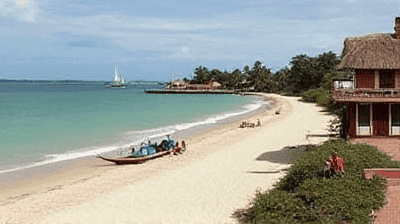

Zanzibar, a breathtaking archipelago off the eastern coast of Africa, is often celebrated for its pristine beaches and crystal-clear waters. However, beyond the shoreline lies a treasure trove of unique experiences that showcase the island's rich history, vibrant culture, and ecological wonders.
Zanzibar is part of the United Republic of Tanzania and consists of several islands, the largest of which are Unguja (commonly referred to as Zanzibar) and Pemba. The islands are renowned for their diverse culture influenced by Arab, Persian, Indian, and European elements, a legacy of centuries of trade. This blend of cultures is reflected in the architecture, cuisine, and traditions that you will discover during your visit.
Zanzibar has a tropical climate, characterized by warm temperatures year-round. The best time to visit is during the dry season, which runs from June to October. During this period, you can expect beautiful weather, perfect for exploring the island's many attractions. The wet season, from March to May, brings heavy rainfall, but it can also offer a quieter experience with fewer tourists.
Most visitors to Zanzibar arrive via Abeid Amani Karume International Airport, which connects to several international destinations, including direct flights from major cities in Europe and Africa. Once on the island, local transportation options include taxis, car rentals, and organized tours.

Zanzibar is often referred to as the "Spice Island" due to its historical significance in the global spice trade. The island's fertile soil and favorable climate provide ideal conditions for cultivating a variety of spices, including cloves, nutmeg, cinnamon, and black pepper. Spice farming has been an integral part of Zanzibari culture for centuries, and today, spice tours offer visitors the opportunity to learn about this delicious heritage.
Taking a guided spice tour is the best way to experience the vibrant flavors and aromas of Zanzibar. Many tours are available, providing insights into the history of spice cultivation and its impact on the island's economy and culture.
What to Expect: During your visit to a spice farm, you will see various spices growing in their natural environments. Guides will explain how each spice is cultivated and harvested, often allowing you to taste the spices fresh from the plant.
Cultural Connections: Many tours also include traditional Zanzibari dishes prepared with the spices you learn about. This is a fantastic way to experience the local cuisine firsthand.
Clove Plantations: Cloves are one of the primary spices grown in Zanzibar. Visiting clove plantations allows you to learn about the harvesting process and the significance of cloves in traditional medicine and cooking.
Interactive Cooking Classes: Some spice tours offer cooking classes where you can use the spices you've learned about to create authentic Zanzibari dishes. It's an interactive and delicious way to deepen your connection to the local culture.
Timing: Tours typically last a few hours and can be arranged in the morning or afternoon. Be sure to wear comfortable clothing and shoes, as you'll be walking through farms and plantations.
Local Guides: Opt for tours led by local guides who can provide authentic insights and personal anecdotes about their farming heritage.
Stone Town, the cultural heart of Zanzibar, is a UNESCO World Heritage Site known for its rich history and intricate architecture. Plantations, trade routes, and colonization shaped the town’s development, leading to its unique blend of cultures. Walking through the narrow streets, you'll find a mix of Arab, Persian, Indian, and European influences that create a fascinating historical tapestry.
Constructed in the 17th century, the Old Fort is one of the oldest structures in Stone Town. Originally built to protect against Portuguese invasions, it now serves as a cultural center and venue for various events.
The House of Wonders, or Beit-al-Ajaib, was once the palace of the Sultan of Zanzibar. It is notable for being the first building in East Africa to have electricity and an elevator.
Zanzibar is the birthplace of legendary musician Freddie Mercury, the lead vocalist of Queen. The museum dedicated to him is located in the former home of his family.
Explore the vibrant markets of Stone Town, where you can witness the hustle and bustle of daily life. The Darajani Market is the largest market in the area, offering everything from spices and fruits to handmade crafts and textiles.
Stone Town is alive with music and dance, influenced by its diverse cultural heritage. Don't miss the opportunity to attend a traditional performance showcasing Swahili music and dance.

While Zanzibar is home to several famous beaches, a number of hidden sandbanks offer a more intimate and tranquil experience. These lesser-known spots are perfect for relaxation, snorkeling, and enjoying the natural beauty of the coast away from the tourist crowds.
Mnemba Atoll, located off the northeast coast of Zanzibar, is a secluded paradise known for its stunning coral reefs and crystal-clear waters.
While Paje Beach is gaining popularity, its southern end features fewer visitors and offers beautiful stretches of white sand.
Just south of Paje, Jambiani Beach is a traditional fishing village that retains its authentic charm. The beach is dotted with swaying palm trees and offers breathtaking views of the Indian Ocean.
Boat Tours: Many of the secluded sandbanks can be accessed via boat tours. Look for local operators offering private or small group tours to ensure a personalized experience.
Timing: Morning or late afternoon is the best time to visit sandbanks, allowing you to avoid peak sun and capture stunning photographs during golden hour.
Taxis and Dala Dalas: For local transport, taxis and dala dalas (shared minibuses) are common. Negotiate your fare before getting into a taxi to avoid misunderstandings.
Bicycle Rentals: Consider renting a bicycle to explore coastal roads and rural areas at a leisurely pace. This allows for a unique perspective of the island’s landscapes.

Zanzibar offers an extraordinary travel experience that goes far beyond its stunning beaches. By exploring the island's rich history through spice tours, delving into the cultural tapestry of Stone Town, and discovering hidden sandbanks, travelers can gain a deeper appreciation of this unique destination. Whether you're a history enthusiast, a foodie, or an adventure seeker, Zanzibar has something for everyone. Your journey to this beautiful archipelago will transform your perspective, leaving you with lasting memories and a desire to return.
Copyright © 2024 Nonstop Tour. All rights by Nonstop Tour.